Disclosure: This article contains affiliate links. We may earn a commission from purchases at no extra cost to you, which helps our travel content.
When most travelers think of Mediterranean islands, images of leisurely beach days and historic ruins typically come to mind. But Tunisia's Djerba Island—a sun-drenched jewel in the Mediterranean—offers an unexpected playground for adventure seekers. As someone who's explored cave systems from Thailand to the Appalachians, I was pleasantly surprised to discover that this North African island delivers adrenaline rushes that rival destinations twice its size. Pack your courage and join me as we explore seven pulse-quickening adventures that showcase why Djerba deserves a spot on every thrill-seeker's radar.
Kitesurfing the Pristine Southeast Coast
The southeastern shores of Djerba offer what I consider the perfect kitesurfing trifecta: consistent winds, shallow lagoons, and uncrowded beaches. After years of chasing wind across three continents, I can confidently say that Djerba's conditions rival the more famous (and expensive) European kitesurfing destinations.
During my week-long stay, I based myself near the Zone Touristique where several kitesurfing schools cluster. The thermal winds typically pick up around 11 AM and provide reliable 15-25 knot conditions through the afternoon. The extensive shallow areas create an ideal learning environment, while more experienced kiters can venture further out for some impressive wave action.
I spent three exhilarating days with Djerba Kite School, where the instructors seamlessly switched between Arabic, French, English, and German to accommodate their international clientele. Their safety protocols were impeccable, and the equipment was surprisingly well-maintained—a detail I've learned to appreciate after encountering questionable gear in other developing destinations.
For those bringing their own equipment, I highly recommend the waterproof kiteboarding bag which kept my gear sand-free and organized throughout the trip. The local instructors were genuinely impressed when I pulled this out—apparently, most tourists arrive with inadequate protection for their expensive kiting equipment.
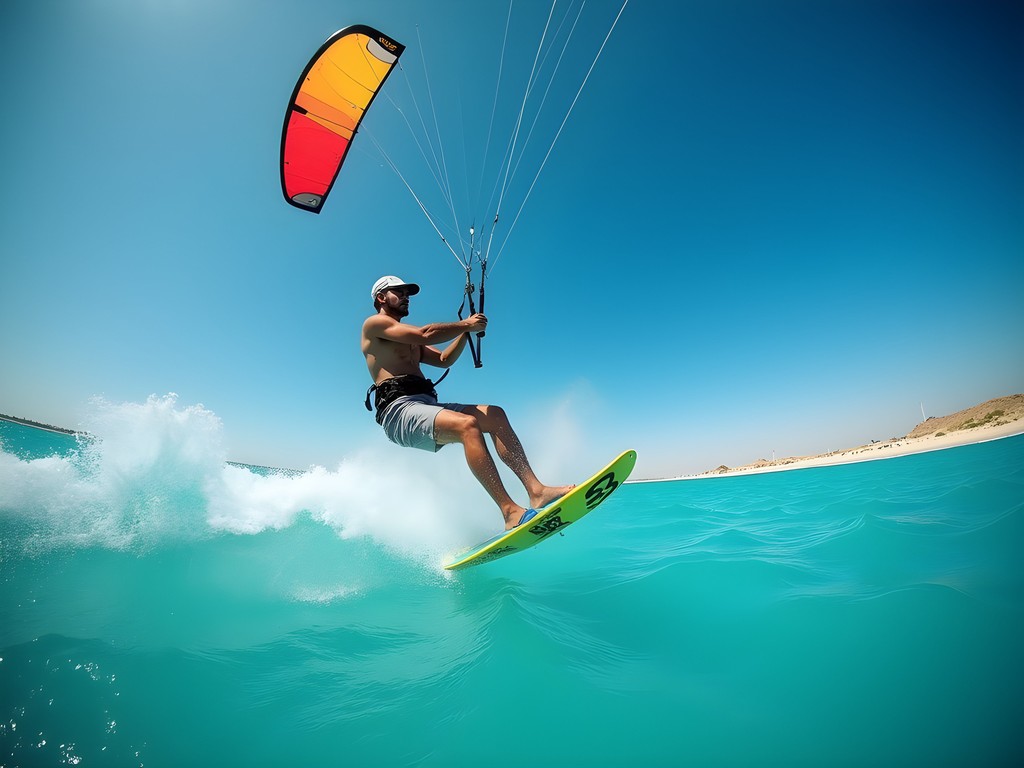
💡 Pro Tips
- Book kitesurfing lessons at least two days in advance during high season (June-August)
- The most reliable winds occur between 11 AM and 4 PM
- Bring reef shoes as some entry points have sharp rocks and sea urchins
Exploring Djerba's Hidden Cave Systems
Few visitors realize that beneath Djerba's arid landscape lies a network of fascinating cave systems—smaller than what I'm used to in Thailand or the American Southwest, but uniquely compelling due to their geological and historical significance.
The most accessible cave system is located near Midoun, about 20 minutes from the tourist zone. Unlike the commercialized caves I've visited elsewhere, these remain refreshingly undeveloped. My guide, Karim, explained that some chambers were used by local inhabitants during various invasions throughout Djerba's tumultuous history.
The cave exploration requires moderate physical fitness—expect to crawl through some narrow passages and navigate uneven terrain. The temperature inside maintains a constant 18°C (64°F), providing welcome relief from Djerba's summer heat.
While exploring these caves, my headlamp proved invaluable. Its waterproof design handled the occasional dripping water, and the multiple lighting modes allowed me to capture some remarkable photographs of the limestone formations. I noticed several fellow explorers struggling with inadequate lighting, which significantly diminished their experience.
As a spelunking enthusiast, I was particularly impressed by the crystalline formations in the deeper chambers—features that aren't mentioned in any guidebook I've read on Tunisia. Remember that these caves aren't officially maintained tourist attractions, so arranging access requires connecting with knowledgeable locals through your accommodation.

💡 Pro Tips
- Wear sturdy closed-toe shoes with good grip for the slippery cave floors
- Bring a secondary light source as backup
- Arrange a guide through your hotel as the cave entrances are difficult to locate independently
Desert Quad Biking Adventures
The southern region of Djerba transitions from Mediterranean coastline to desert-like terrain, creating the perfect playground for quad biking adventures. Having experienced similar excursions in the American Southwest, I was curious how Djerba's offerings would compare.
I booked a half-day excursion with Desert Adventures Djerba, located near Midoun. After a thorough safety briefing (refreshingly professional compared to similar operations I've encountered in Southeast Asia), we set off on a guided tour that combined coastal paths, sandy dunes, and traditional Berber villages.
The 250cc quads were well-maintained and powerful enough to handle the varied terrain. Our route took us through landscapes that shifted dramatically—from coastal paths where the Mediterranean sparkled to our right, to inland areas where we navigated challenging dunes and rocky outcroppings.
The highlight was stopping at a traditional village where we were welcomed with mint tea and given time to interact with local artisans. This cultural component elevated the experience beyond mere motorized excitement.
For this dusty adventure, my neck gaiter proved essential for protection from the omnipresent sand and sun. I've used this versatile piece of gear on adventures across four continents, and it's particularly valuable in desert environments like southern Djerba.
The tour concluded with an exhilarating race across a wide, flat salt pan—a moment of pure freedom that reminded me why engine-powered adventures in exotic locations never get old, regardless of how many times you've experienced them.
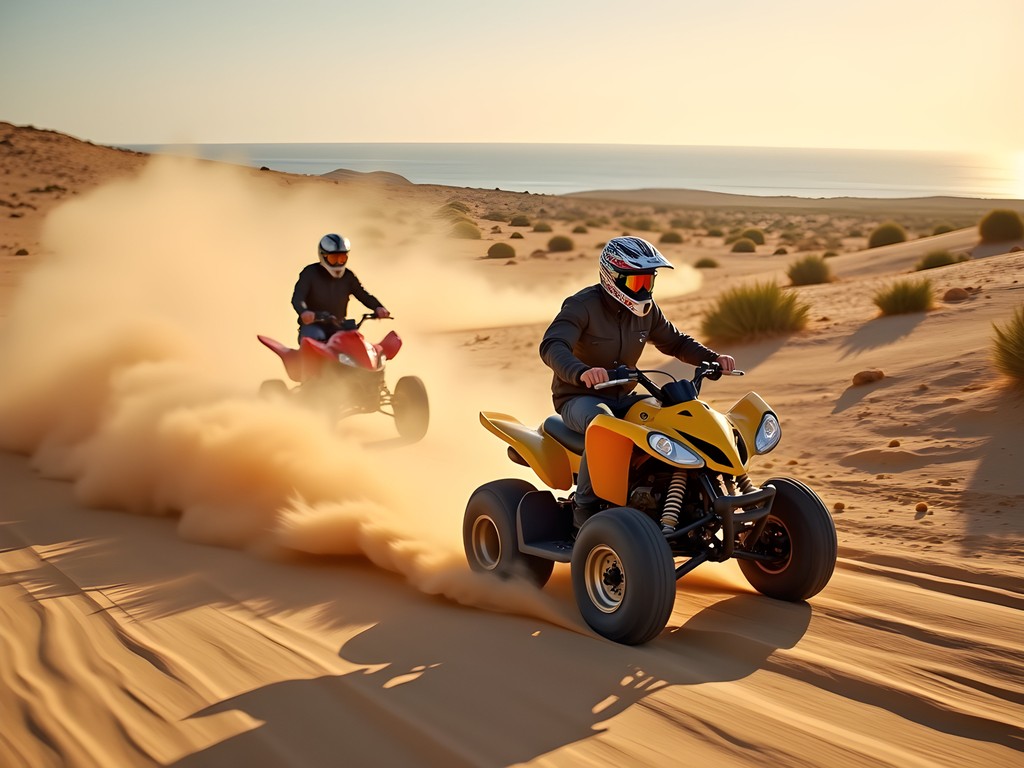
💡 Pro Tips
- Apply sunscreen generously before departure as the combined effect of sun and wind is intense
- Wear closed shoes rather than sandals to protect your feet from hot engine parts
- Bring cash for the village stop as credit cards aren't accepted for purchasing local crafts
Traditional Fishing with Local Experts
While not traditionally categorized as an adrenaline activity, traditional fishing in Djerba delivers its own unique brand of excitement. Having grown up near coastal Busan before my adoption, I've always felt a connection to fishing communities worldwide, and Djerba's centuries-old techniques fascinated me from both cultural and sporting perspectives.
I arranged a dawn expedition with a local fisherman named Habib through my hotel concierge. We set out in his weathered wooden boat just as the first light crept across the horizon. Habib spoke limited English, but fishing creates its own universal language of patience, observation, and shared excitement.
What sets Djerba's traditional fishing apart is the charfia method—an ancient Phoenician fishing technique using palm frond barriers arranged in intricate patterns to guide fish into traps during tidal movements. Participating in this process requires surprising physical exertion and quick reflexes.
We also tried hand-line fishing further offshore, where I hooked a respectable sea bass that later became my lunch. The polarized fishing sunglasses I brought along proved invaluable for spotting fish movement beneath the surface and protecting my eyes from the intense Mediterranean glare.
The most thrilling moment came when Habib demonstrated octopus hunting with a specialized spear—a technique requiring remarkable patience and precision. When he invited me to try, I discovered it's far more challenging than it appears, leading to a humbling but memorable experience that connected me to generations of Mediterranean fishermen who've practiced these methods for centuries.
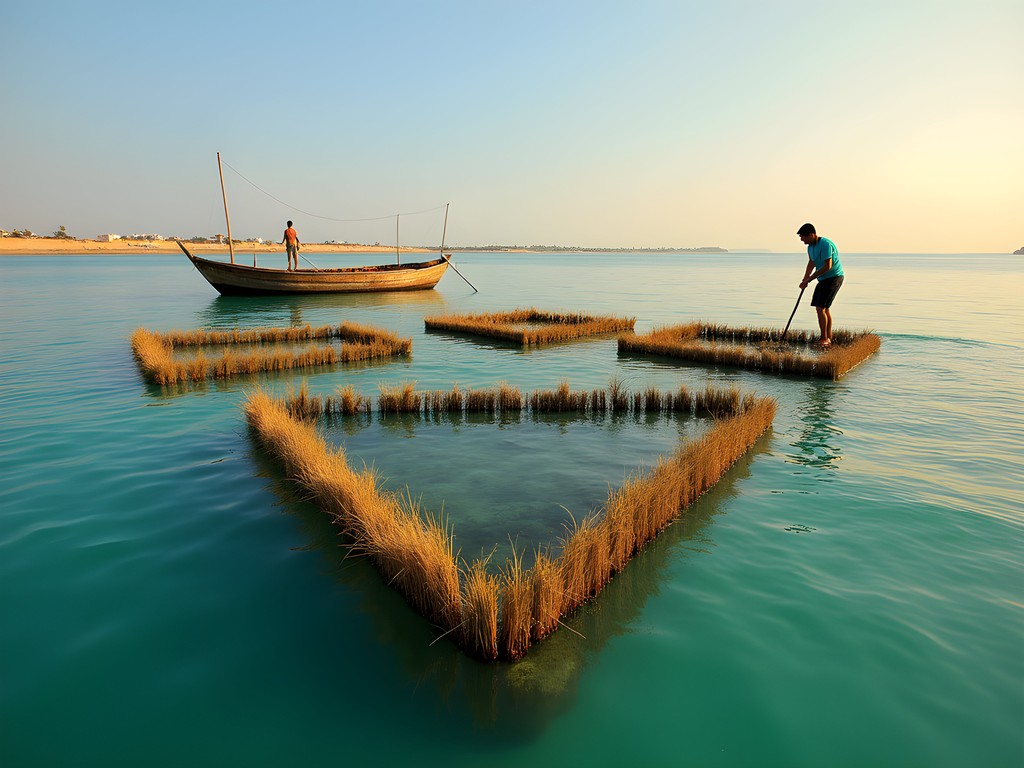
💡 Pro Tips
- Book fishing excursions directly through local contacts rather than tour agencies for a more authentic experience
- Bring water and snacks as traditional fishing trips often last 4-5 hours
- Apply waterproof sunscreen as the reflection from the water intensifies sun exposure
Horseback Riding Through Ancient Olive Groves
Djerba's interior is dotted with ancient olive groves—some trees dating back over 1,000 years—and exploring them on horseback offers a perfect balance of adventure and cultural immersion. As someone who typically gravitates toward water-based activities, I was surprised by how much I enjoyed this inland excursion.
I connected with Djerba Equestrian Center near Midoun, which maintains a stable of well-trained Arabian and Berber horses. My guide, Sami, paired me with a spirited mare named Zahra after assessing my intermediate riding experience. The center provides quality equipment and thorough orientation, which I appreciated after encountering questionable safety standards at similar operations in other countries.
Our three-hour journey took us through terrain that constantly shifted between dense olive groves, traditional villages, and open countryside. The route included several opportunities for controlled gallops along wide paths, providing genuine adrenaline rushes without feeling dangerous.
For this ride, I wore my quick-dry hiking pants which provided the flexibility needed for comfortable riding while protecting my legs from branches and sun exposure. Several riders in jeans were visibly uncomfortable in the heat, reinforcing my belief that proper technical apparel enhances any adventure experience.
The highlight was stopping at a family-owned olive press where we witnessed traditional cold-pressing methods and sampled oil from trees that have produced for centuries. The connection between the land, its agricultural heritage, and our mode of transport created a uniquely immersive experience that would be impossible to replicate in a vehicle.

💡 Pro Tips
- Book rides for early morning or late afternoon to avoid the midday heat
- Communicate honestly about your riding experience—the guides tailor the experience accordingly
- Bring a small backpack with water as the rides can last 2-4 hours depending on the route
Paragliding Over Djerba's Dramatic Coastline
For the ultimate adrenaline rush combined with breathtaking views, paragliding over Djerba's northeastern coastline delivers an experience that rivals similar flights I've taken in more established adventure destinations.
I arranged my tandem flight through Horizon Paragliding, a small operation run by a French-Tunisian couple who bring European safety standards to their operation. After a detailed safety briefing, we drove to a launch point atop one of Djerba's few elevated areas near Houmt Souk.
The takeoff requires a short but decisive run down a gentle slope before the thermal currents catch the wing and lift you skyward. That moment of transition—when gravity seems momentarily suspended—delivers a rush that never gets old, even for someone who's paraglided on three continents.
Once airborne, the perspective of Djerba transforms dramatically. From above, you can fully appreciate the island's unique geography: the causeway connecting it to mainland Tunisia, the patchwork of salt pans that produce the region's famous sea salt, and the striking contrast between developed tourism zones and traditional villages.
My pilot, Kamel, was skilled at finding thermal uplifts that extended our flight to nearly 25 minutes—considerably longer than the advertised 15-minute experience. He also performed several optional spiral maneuvers that significantly amplified the thrill factor.
I captured the entire flight using my action camera mount which allowed hands-free recording while securely holding my camera. This specialized mount has become essential for my adventure travels, particularly for activities where both hands need to remain free.
The landing on a wide beach was surprisingly gentle, and the entire experience was professionally managed from start to finish—something I don't take for granted after experiencing questionable operations in other developing tourism destinations.
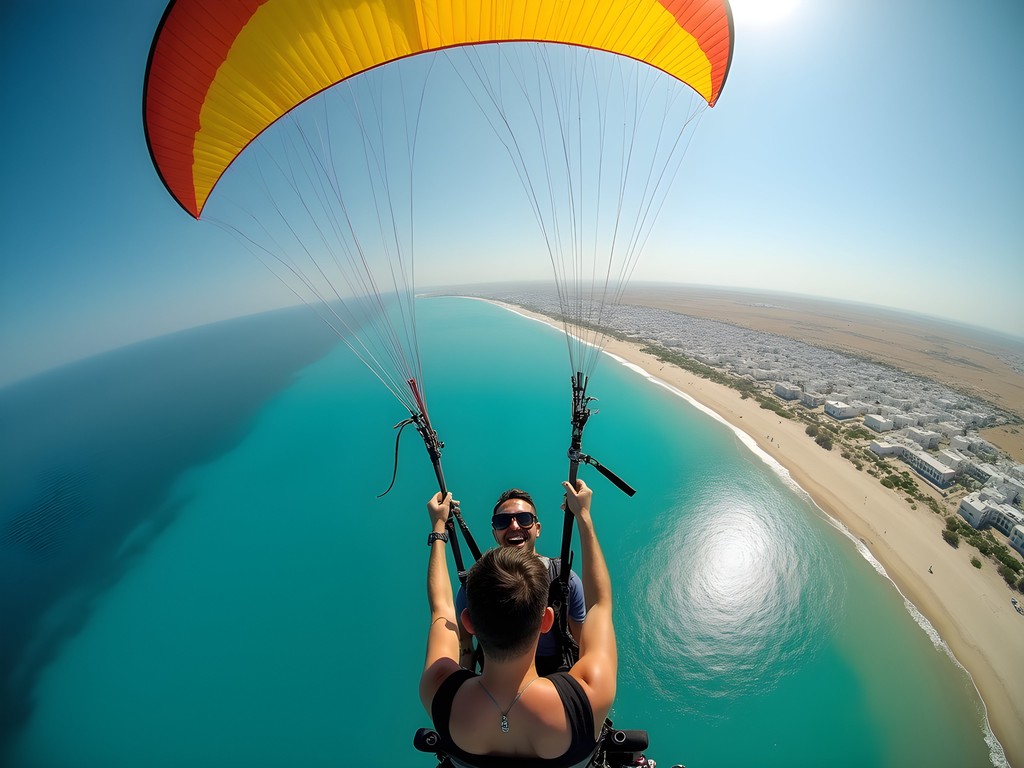
💡 Pro Tips
- Book flights for early morning when winds are most favorable and visibility is best
- Wear secure footwear as the takeoff requires running on uneven terrain
- Communicate any concerns or physical limitations to your pilot before takeoff
Scuba Diving the Ancient Mediterranean Wrecks
Djerba's underwater world offers fascinating diving opportunities that combine natural marine ecosystems with historical significance. As someone who's explored cave systems worldwide, I found the transition to maritime archaeology particularly compelling.
I connected with Scuba Djerba Center, a PADI-certified operation near Houmt Souk that offers both recreational dives and specialized archaeological diving experiences. After verifying my certification and completing a refresher session in shallow water, we set out for a two-tank dive day.
Our first dive explored the remains of a Roman trading vessel that sank approximately 1,800 years ago. While most artifacts have been removed to museums, the wooden structure and some amphorae remain, creating an eerie underwater museum. The visibility averaged 15-20 meters—not exceptional by tropical standards but more than adequate to appreciate the site's historical significance.
The second dive focused on a more recent wreck—a merchant ship from the early 20th century that rests in about 24 meters of water. Marine life has claimed this structure, with schools of grouper and bream creating a vibrant ecosystem around the deteriorating hull.
For these dives, my dive computer proved invaluable for monitoring depth, time, and decompression requirements. Several other divers in our group were using rental equipment that provided less detailed information, highlighting how personal gear can enhance both safety and enjoyment.
What makes Djerba's diving unique is the intersection of Mediterranean marine ecology with layers of human history—from Phoenician and Roman vessels to more modern wrecks. The dive center's archaeological specialist provided context that transformed these dives from mere underwater sightseeing to meaningful historical exploration.

💡 Pro Tips
- Book archaeological dives at least two days in advance as they require specialized guides
- Bring certification cards and logbooks as dive centers strictly enforce documentation requirements
- Consider a 3mm wetsuit even in summer as deeper dives can be cooler than expected
Final Thoughts
Djerba's adventure offerings surprised me with their diversity and quality, challenging my preconceptions about North African tourism. While the island can't compete with specialized destinations in terms of extreme adventures, it offers something potentially more valuable: authentic experiences that seamlessly blend cultural immersion with physical challenges.
What makes Djerba special is this integration of adventure with history and tradition. You're not just kitesurfing—you're doing so where Phoenician sailors once navigated. You're not just exploring caves—you're entering spaces where island inhabitants sought refuge throughout centuries of invasions. This layering of experience creates memories that resonate more deeply than pure adrenaline ever could.
As adventure tourism continues developing here, I hope Djerba maintains this balance between accessibility and authenticity. For families seeking to introduce older children to adventure travel, couples wanting to combine relaxation with excitement, or solo travelers like myself looking to connect with both natural landscapes and cultural heritage, Djerba offers a surprisingly complete package that deserves more recognition in adventure travel circles.
✨ Key Takeaways
- Djerba offers diverse adventure activities suitable for intermediate to advanced experience levels
- The island's unique appeal comes from combining physical challenges with cultural and historical context
- Local operators increasingly meet international safety standards while maintaining authentic experiences
- Summer provides optimal conditions for most adventures, though spring and fall offer more comfortable temperatures
- Most activities can be arranged with 1-2 days notice through hotel concierges or direct contact
📋 Practical Information
Best Time to Visit
May to October, with June-August offering optimal conditions for water sports
Budget Estimate
$800-1200 per person for a week including mid-range accommodation and 4-5 adventure activities
Recommended Duration
5-7 days
Difficulty Level
Moderate To Challenging
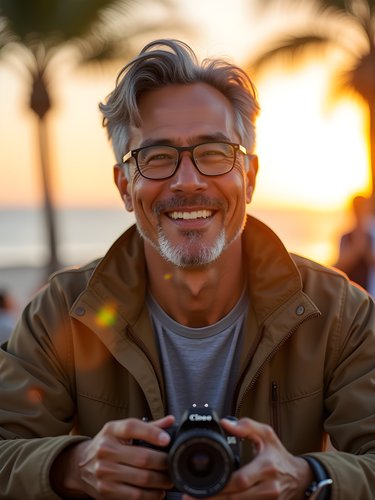
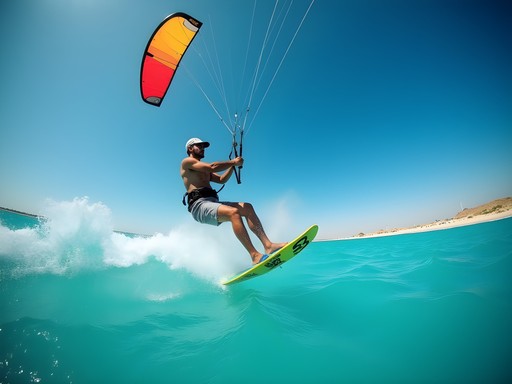

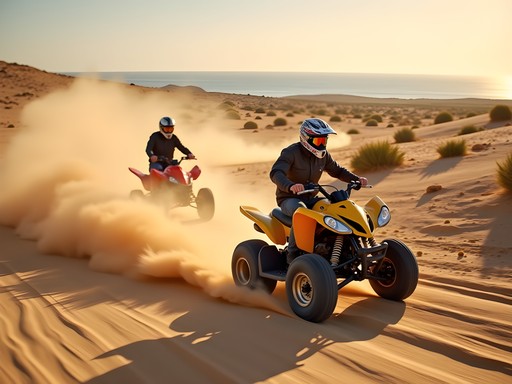













Comments
globeone5860
Those cave photos are incredible! Definitely adding this to my Mediterranean adventure list. Anyone know the best time of year for kitesurfing there?
travelwanderer
I've heard April-June and September-November are prime kitesurfing seasons. Summer can get really hot but the wind is still good!
nomadperson
Great post! What's the best way to get around between these activities? Rent a car or are taxis reliable?
Stephen Martin
I found renting a car to be the most convenient option. Roads are decent, and having your own transportation gives you flexibility. Many adventure operators also offer pickup services from major hotels if you prefer not to drive.
Sophia Gomez
Stephen, your post brought back such vivid memories! I squeezed in a long weekend in Djerba between business meetings in Tunis last year. The cave exploration was the highlight for me - there's something magical about those limestone formations with their blue reflections from the water. I went with a local guide named Majid who showed us sections tourists rarely visit. One thing I'd add for readers: the traditional fishing experience is so much more than just catching fish. The fishermen shared stories passed down through generations, and we ended up cooking our catch right on the beach at sunset. It's as much a cultural immersion as it is an adventure activity. For anyone planning a visit, I found April to be perfect - warm enough for water activities but before the intense summer heat arrives. Has anyone tried these adventures during other seasons?
coffeeclimber
Going there next month! How safe is the quad biking for someone who's never done it? And do you need to book these activities in advance?
globeone5860
Did the quad biking last year - totally beginner friendly! They give you a quick lesson before heading out. I'd book the kitesurfing in advance but the quad tours usually have daily availability. Take a compact camera if you have one - the desert landscapes are stunning!
Dylan Turner
Excellent breakdown of Djerba's adventure offerings, Stephen. I visited last October and found the kitesurfing conditions particularly impressive. The consistent winds combined with shallow, warm water make it ideal for both beginners and advanced riders. One point worth adding is the quality of instruction available - I took lessons with Djerba Kite Club and was impressed by their multilingual staff and new equipment. The cave systems you mentioned are indeed a hidden gem, though I'd recommend visitors bring their own headlamp as the rental options can be unreliable. Did you get a chance to try the parasailing near Houmt Souk? That would make a worthy addition to this list.
nomadperson
How difficult is kitesurfing for a complete beginner? I've never tried water sports but it looks amazing in the photos!
Dylan Turner
It's actually quite accessible! Most schools offer 2-3 day beginner courses that will get you up and riding. The shallow waters around Djerba are perfect for learning since you can stand in many areas. Definitely worth trying!
travelwanderer
I had no idea Djerba had so many adventure options! Always thought it was just beaches and resorts. Adding to my list!
Stephen Martin
Thanks! That was exactly my reaction before visiting. The adventure tourism scene there is really developing nicely.
Frank Garcia
Just got back from Djerba and followed many of your recommendations, Stephen! The kitesurfing was indeed fantastic - I spent 3 days at the southeast spots and the conditions were perfect for a beginner-intermediate like me. The wind was consistent 15-20 knots most days. I also did the cave exploration with Ahmed as you suggested. Absolutely worth it! The cave systems were more extensive than I expected, with some really impressive stalactite formations in the deeper chambers. Ahmed knew exactly where to go for the best photos too. For anyone else planning a trip: I found October to be the perfect time - fewer tourists, still warm enough to swim (25-27°C), and all activities running. The quad biking was a highlight too, though I'd recommend going early morning before it gets too hot.
skyway
Thanks for the October tip! Was thinking about going in summer but might reconsider now.
Frank Garcia
Definitely go October if you can! July-August is scorching (35-40°C) according to locals, and some activities get limited because it's just too hot for safety.
sunsetblogger
Just back from Djerba and can confirm everything in this post! One tip for the quad biking - go EARLY morning (we went at 7am) to avoid both the heat and the crowds. The desert light at that hour is incredible for photos, and we practically had the dunes to ourselves. The traditional fishing was our favorite experience though - so authentic and the seafood was the best we had on the island. Definitely not what I expected from a Mediterranean vacation but in the best way possible!
escapeblogger
Is it safe for solo female travelers? I'm interested in the adventure activities but concerned about traveling alone in North Africa.
Claire Hawkins
I've done parts of Tunisia solo (though not this trip) and found Djerba to be quite safe and tourist-friendly. The adventure activity operators are professional and used to international visitors. Basic precautions apply like anywhere, but I felt comfortable there. The resort areas are very secure.
Sage Dixon
Great post Stephen! Djerba really is an underrated adventure destination. I spent two weeks there last fall focusing entirely on kitesurfing and can confirm the conditions are world-class. The consistent thermal winds and shallow, warm water make it perfect for progression. I stayed at a kite camp near Midoun where they offered daily transport to different spots depending on wind direction. One adventure you didn't mention - night kayaking along the northeast coast! There's a tour that takes you out during the full moon, and if you're lucky (like we were), you might see bioluminescence in the water. Absolutely magical experience and not crowded at all. Djerba's definitely one of those places that offers so much more than the typical beach holiday most visitors expect.
Venture X
Premium card with 2X miles, $300 travel credit, Priority Pass